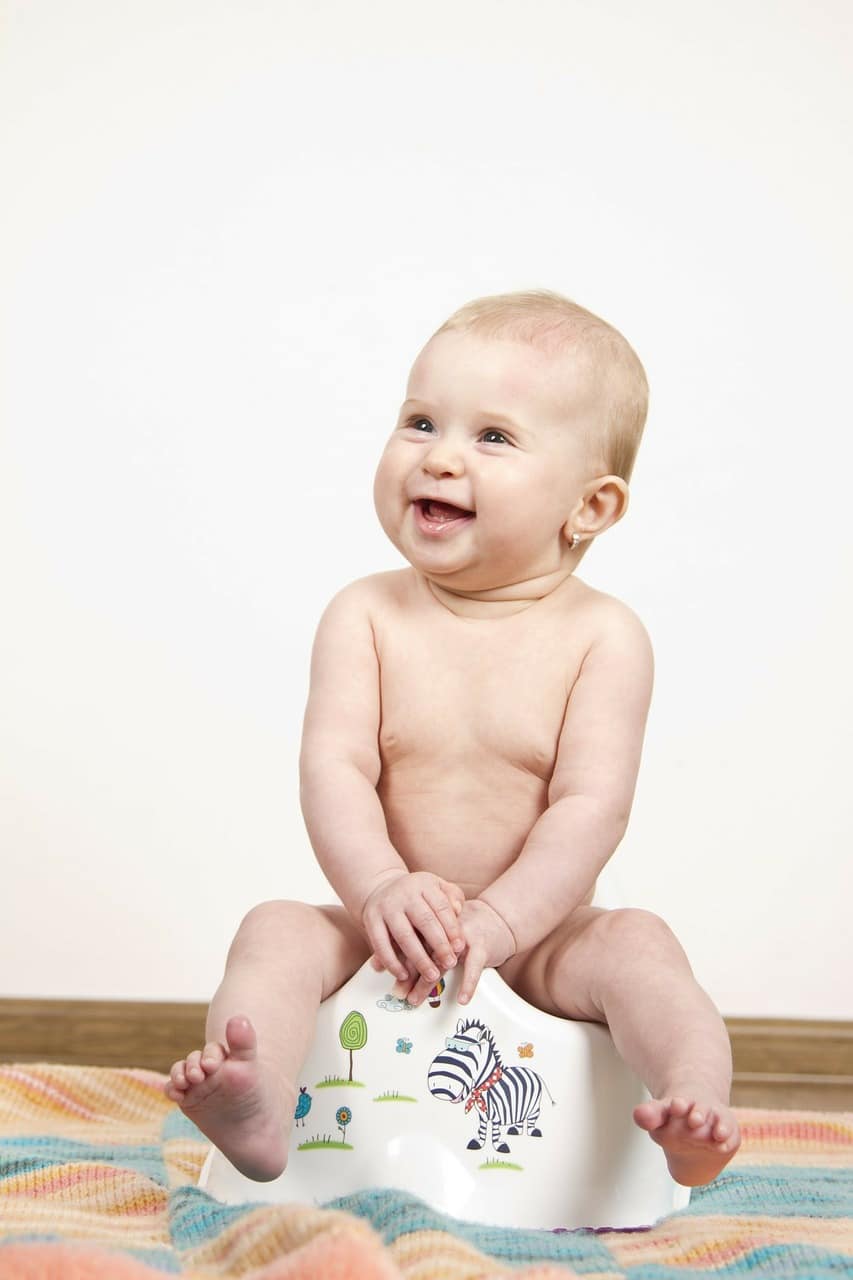Having had many years’ experience with potty training as a parent and seasoned professional, here are some key techniques and tricks of the trade I’d like to share.
1. Every Child is Unique.
Many of you may know or heard of a child who was miraculously fully potty-trained before 2. BE WARNED! This is an exception to the norm. Possible – YES, typical – NO! And, IMHO girls do tend to get the hang of it sooner than boys.
Most children start expressing some interest in using the toilet by 2 – 3 years of age. Watch for signs that indicate a child is registering when they need to go/or after they’ve gone:
• Clutching at the front or back of their diaper or nether regions
• Verbalize when the need arises or soon after accident
• Don’t want to wear a diaper/pull up
• Interested in underwear
• Wants to try to sit on the toilet and wash own hands
• Follow’s other children’s lead

2. Involve Them in the Process.
Make it a “treat” and let them pick out their own underwear. Communication is key, not just with your child but anyone and everyone that should be aware (family members, friends, caregivers, teachers etc.). Inform them of where you are in the process, and how the past 12-24hrs have been.
3. Ditch the Diapers.
Regardless of your family’s circumstances, toilet training is a messy rite of passage! Explain to your child that they will be wearing underwear and encourage them to be dry and clean.
4. Regular Verbal Prompts and be Consistent.
Every 30-60 minutes ask “do you need to use the bathroom?”, “do we need to change your diaper/underwear?” or whatever verbage you use. Go through the process at regular intervals despite whether “successful” or not. Don’t be discouraged or focus on the “accidents”, keep it light and fun when in the bathroom. Talk, read, sing.
5. Positive Reinforcement.
A visual chart or system that involves tools to show their potty progress is widely recommended. For some, a sticker/treat/toy earning system works, whilst others feel that because it involves a basic human function, why should it be celebrated as such? I dare say general opinion is quite evenly distributed.
6. Be Patient!
Take lots of deep breaths. Ok, maybe not in near proximity. Expect accidents and try to understand that this really is your little one’s last bastion of control. Think about it though…..we pretty much dictate when they get up/go to sleep, when and what to eat, what they wear, where to go etc. etc. etc. This is the ONE thing they may subconsciously comprehend and act on – that we simply can’t affect directly.

Some families and kiddos prefer a smoother transition, whilst others are fine with the “rip the band-aid off” approach. Regardless, this is a major milestone in early childhood that affects us all, and if nothing else remember folks, everyone (albeit many different versions) gets it in the end 🙂
